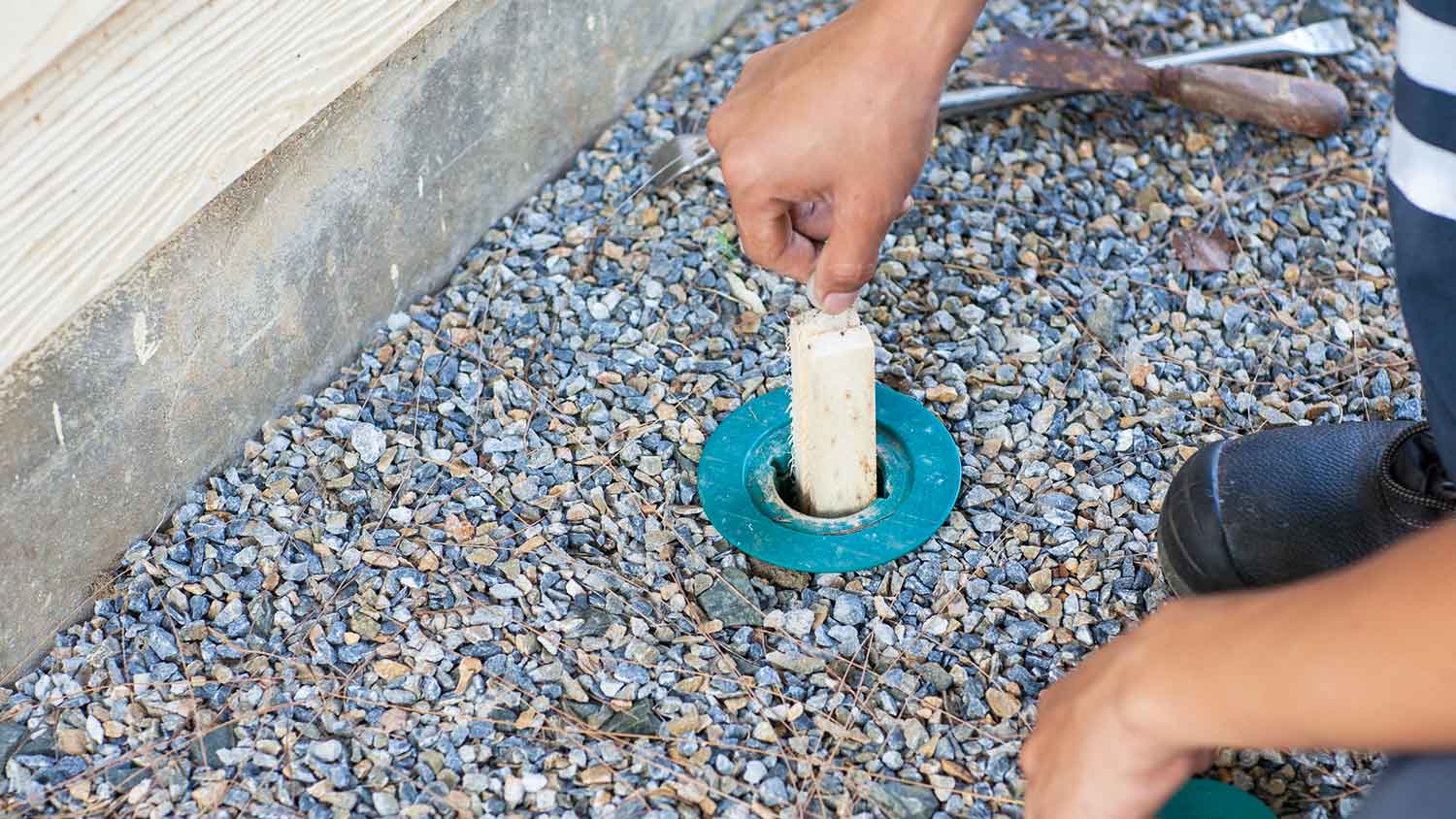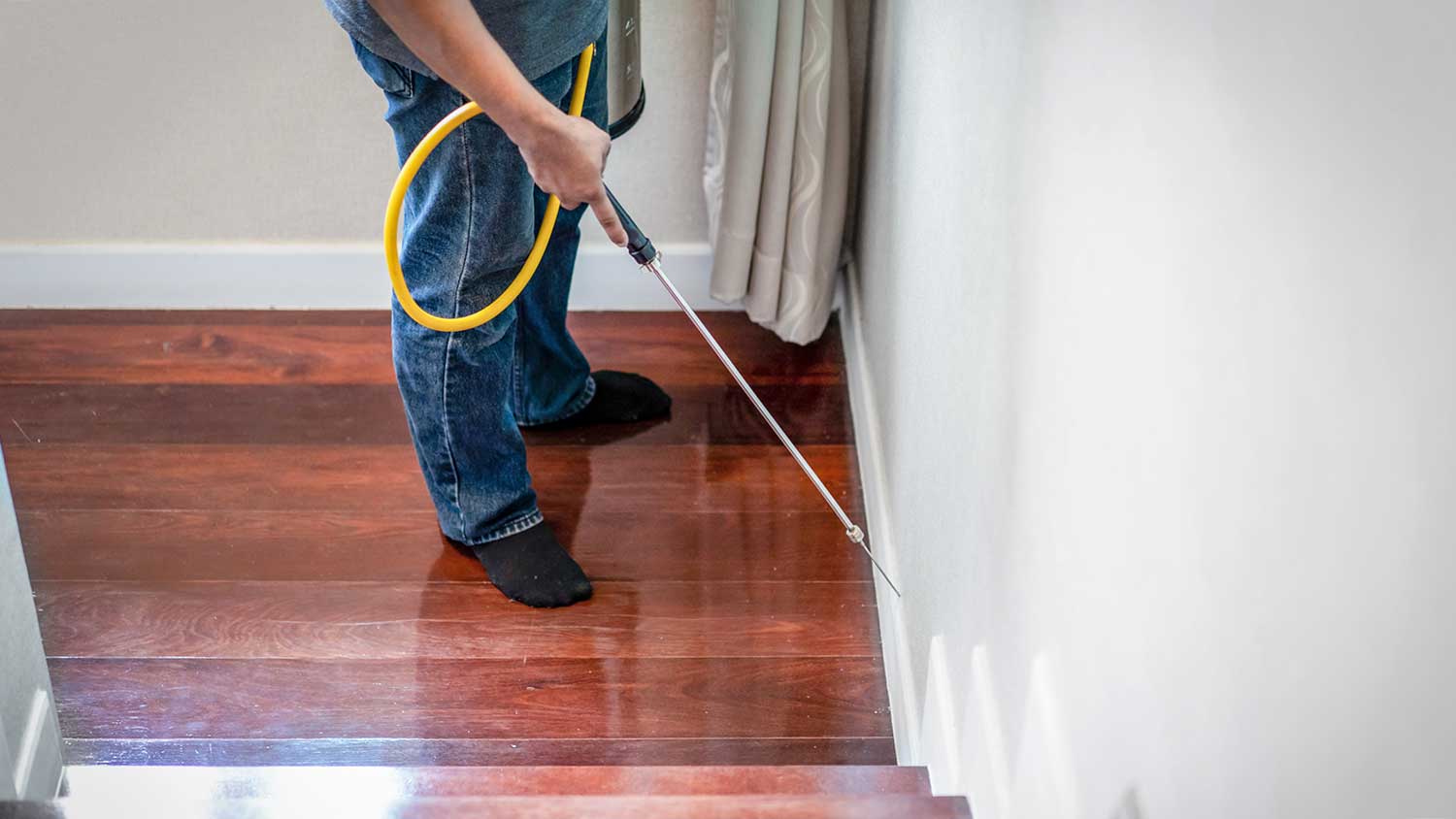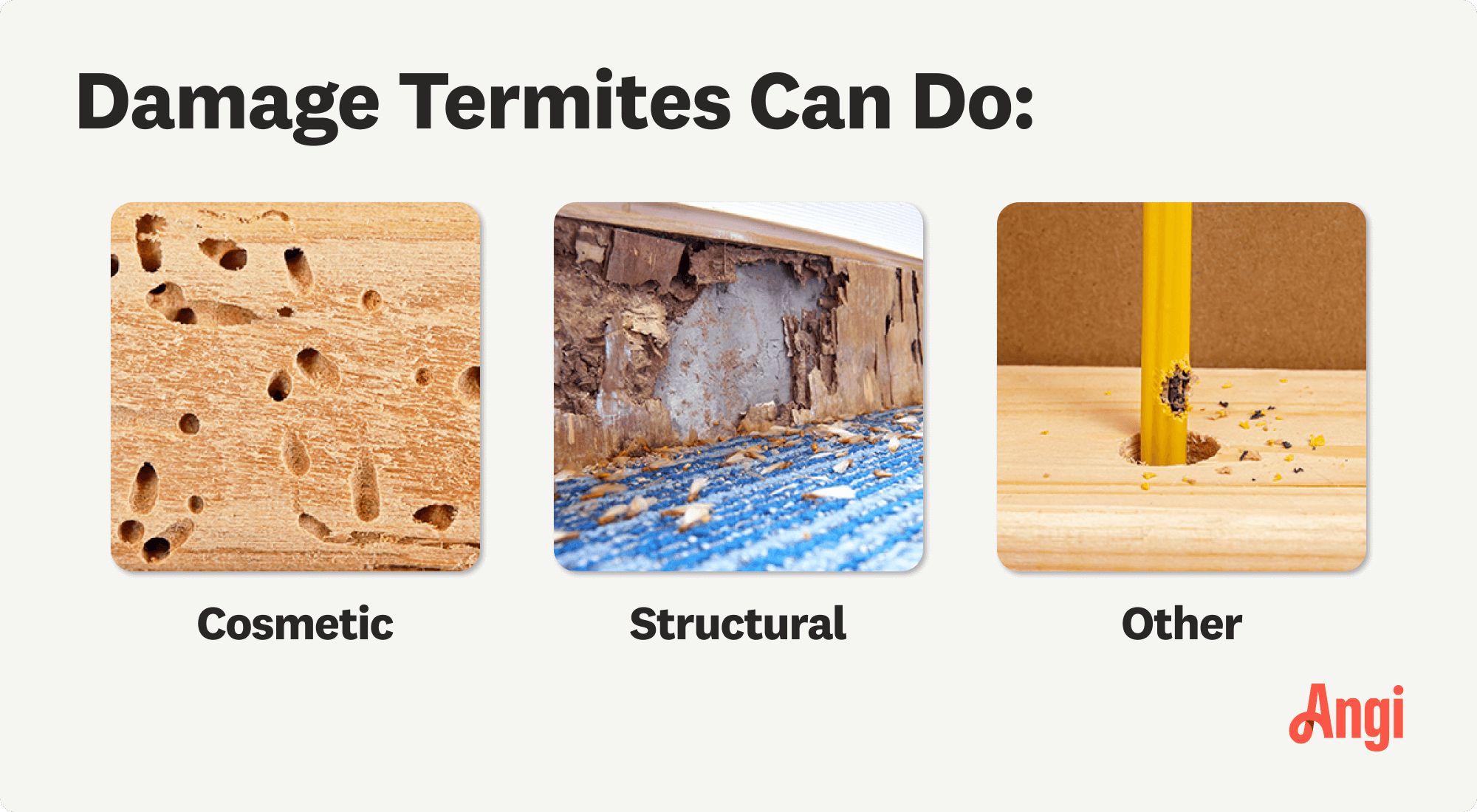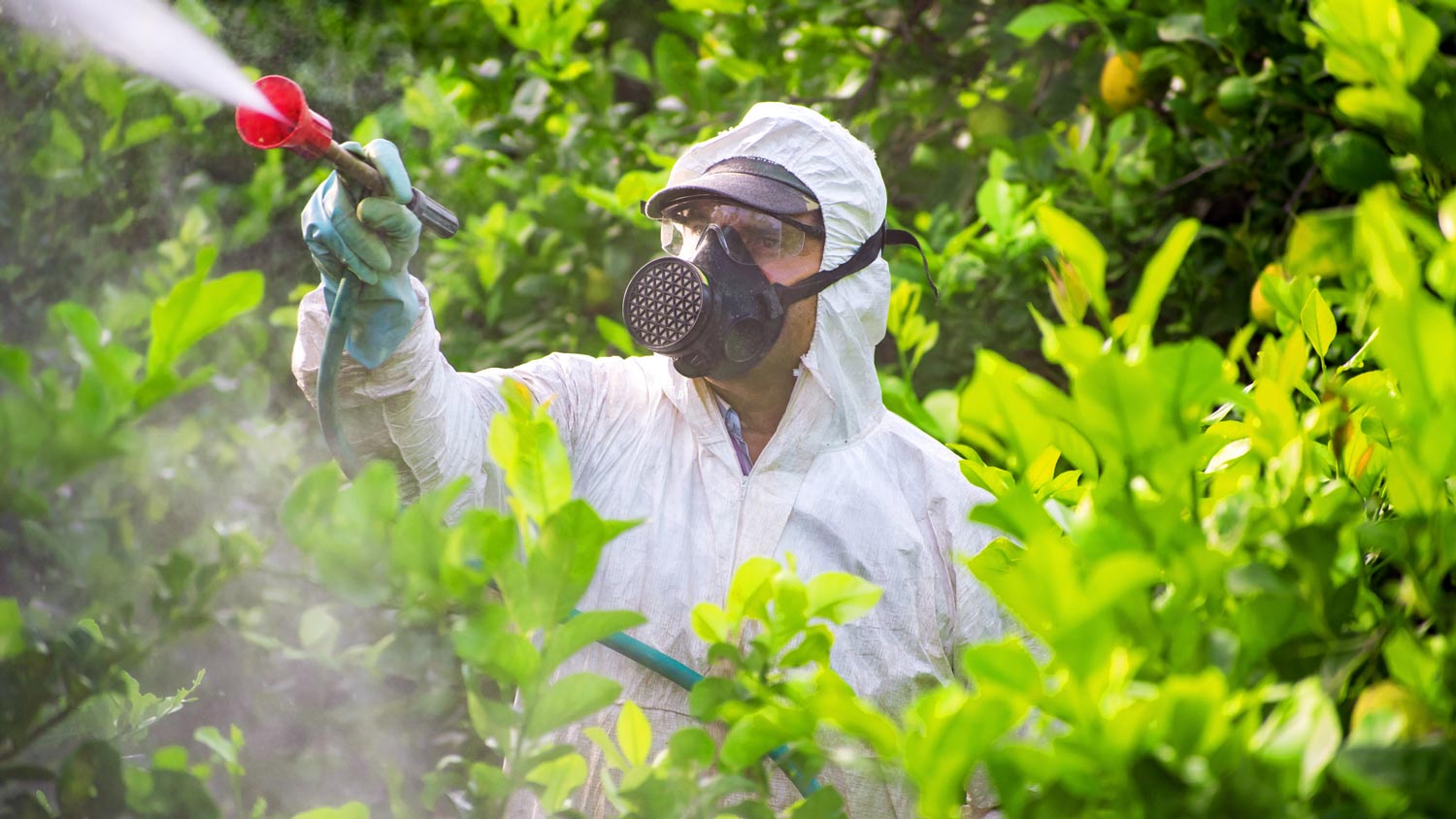
Keep your home free of termites and the damage they do. Learn more about inspections, infestations, and the average cost of termite treatments.
Send those unwanted pests packing


If you suspect termites are making a meal of your beautiful wood banisters or beams, it’s important to identify the best type of termite treatment as quickly as possible. Your options include bait systems, termicide, moisture removal, and fumigation for severe cases.
After confirming that you have some new unwelcome roommates, a local termite control professional may recommend several methods to kick them out, depending on the size, severity, and location of the infestation. While your termite specialist will make the best recommendation for your situation, familiarize yourself with the best types of termite treatments.
| Treatment | Pros | Cons |
|---|---|---|
| Bait systems | Easy to use, DIY-friendly, affordable | Requires many stations, takes weeks to start working |
| Gas fumigation | Reaches hidden termites, clears homes of pests | Expensive, requires relocation for days at a time, very toxic |
| Termiticide | Direct contact and soil treatment options, barrier options, versatile placement | Toxic, unlikely to kill the colony alone, may require leaving the home for several hours |
| Moisture removal | Helps prevent reinfestation, address home damage, works for many pests | Won’t remove current infestations, takes work to find existing moisture problems |

Bait systems are one of the most common treatment options for getting rid of termites. This method takes a while, though, as these systems last one year and involve a monitoring period. The entire process can take several months to eradicate the colony.
Here are the steps involved in using bait systems to remove termites:
A pest control professional will set up monitoring stations around the home.
Then, they will install bait systems around the home’s perimeter and continue monitoring these areas. The average is 25 to 35 stations.
The bait systems include insecticides that the termites eat. The termites also carry the bait to their colonies, stopping their growth and eliminating them.
The bait systems may take weeks before the termites start returning the bait to the colony.
For extreme cases of termite infestation, gas fumigation is likely your best treatment option. This method is essential if the infestation is widespread or if the location of the termites is hard to reach.
The gas fumigation process can take anywhere from 24 to 72 hours, depending on the size of your home and the extent of infestation. Keep in mind that termite tenting costs $5 to $20 per linear square foot, plus the cost of lodging for household members while the fumigation takes place.
Here are the steps involved in using fumigation to remove termites:
A termite control specialist will place a tent over your home before releasing the gas inside the structure.
The gas will circulate throughout the home and make its way through cracks, crevices, and inside wood to kill off the termites.
Once it’s confirmed that all termite colonies have been killed, the termite control pro will remove the tent.
You’ll likely have to wait about 6 hours after tent removal before entering the house to ensure the gas has properly aerated.

Termiticide is a class of insecticides formulated specifically to target termites. This type of treatment is best used for small cases of infestation where termites reside in a few isolated spots or as a deterrent to keep the bugs from entering your home. One of the benefits of a termite inspection is that the specialist can suggest whether you can stick to using termiticides or elevate the solution to a more high-powered elimination method.
Here are the steps involved in using termiticides to remove termites:
Liquid termiticides are sprayed directly onto a wood surface, protecting the wood from termites and slowly killing existing termites that ingest the solution.
Termiticides are also used in bait form where a slow-acting poison is added to food sources that lure colonies of termites foraging in or near your home.
Reducing and removing moisture in your home can help prevent termites from coming in and dehydrate and kill any current creatures inside your walls. Because most termites cannot survive without moisture, moisture removal is often an effective, budget-friendly way to say goodbye to the pesky bugs.
Follow these guidelines for successful moisture removal:
Add a dehumidifier: Using a dehumidifier, especially for homes in humid environments, will help reduce the moisture in the air.
Inspect for leaks: Look for any signs of plumbing leaks, wood rot, or decay, which can also attract termites and act as an entry point or nesting area.
Remove clutter and debris: Clear out any clutter, such as old magazines, newspapers, or cardboard boxes, in warm, damp areas such as attics or basements.

While some termite treatments may seem like they’ll suit your needs better than others, you’ll want to talk to a termite inspector to determine the best course of action. One way to determine the right treatment type is to choose based on the kind of termite eating your home.
| Type of Termite | Best Treatment |
|---|---|
| Subterranean | Bait stations and close monitoring |
| Drywood | Termiticide, bait stations, sometimes fumigation |
| Dampwood | Moisture control, bait stations, termiticide |
This type of termite prefers to build underground nests, so any wood that comes in contact with the ground outside your house can act as a direct pathway to your home. The most effective treatment options for subterranean termites include monitoring and bait stations and termiticide.
Unlike subterranean termites, drywood termites don’t need contact with wood near the ground to gain entry inside. Instead, they can fly up to a mile to find the perfect nesting spot and establish their colony inside their preferred type of wood. Since they need less moisture than other types of termites and tend to infest structural wood, it’s best to treat them with gas fumigation or targeted termiticide application.
Although dampwood termites tend to be less damaging to your home, they can still be a nuisance if an infestation occurs. As the name suggests, dampwood termites are drawn to wet, rotting wood, such as stumps or logs outside the home. The best way to prevent or treat a dampwood infestation is to control the moisture that collects around your home’s exterior. You should resolve any leaks, stagnant water, or other water sources that can affect surrounding wood. Termiticide application can also kill off current infestations while you work to put prevention methods in place.
From average costs to expert advice, get all the answers you need to get your job done.

Keep your home free of termites and the damage they do. Learn more about inspections, infestations, and the average cost of termite treatments.

Snake removal cost comes down to the type and number of snakes you’re dealing with and where they’re located inside your home. This guide breaks it down.

Moth infestations can cause damage to items in your home. Learn how much moth extermination costs and ways to save in this informative guide.

Learn who to hire to exterminate mosquitos, compare mosquito extermination and pest control, and see how pros work. Get clear steps to choose with confidence.

Knowing how to get rid of mice in the walls involves taking preventative measures. Our DIY guide explains how to banish these rodents for good.

There are many types of mites that may infest your home. Learn how to get rid of mites and tips for preventing them from returning.